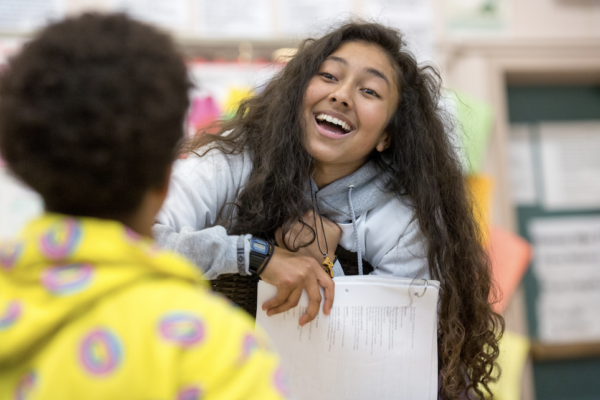With the implementation of Covid safety protocols in schools being hindered by widespread misinformation and with much of the discussion regarding instruction on systemic racism characterized by a misunderstanding of how history has shaped today’s society, the “twin pandemics” of racism and Covid have highlighted the importance of civic learning for all Americans.
Although “civics” is often thought of as a high school course that covers a specific body of knowledge, contemporary understanding encompasses a much broader set of competencies that fall into three categories:
- Civic knowledge of government structure and processes, history, and other relevant social studies concepts, including the ways that history has influenced current societal conditions.
- Civic skills, such as critical thinking, communication, collaboration, research skills, and media literacy, that enable students to engage in democratic processes.
- Civic dispositions that are crucial for effective democratic engagement, including sense of civic duty, concern for the welfare of others, and sense of agency.
A RAND Corporation survey of a nationally representative sample of social studies teachers—including elementary teachers who cover the topic—showed widespread support for civics among teachers but identified a number of factors that hindered their efforts to teach it, including a lack of engaging, culturally relevant instructional materials, inadequate preservice preparation, and pressure to cover other subjects. The survey found that schools serving more students from traditionally underserved groups placed less emphasis on certain types of civic-learning activities.
Here are several strategies to address these challenges:
Incorporate civic learning into other academic content
It is not surprising that many teachers report other subjects getting in the way of civics. State accountability policies can send a message that English language arts and STEM should be prioritized. However, civic learning need not come at the expense of learning in other subjects or preparation for college and careers. To the contrary, lessons in literature, science, and mathematics lend themselves to the inclusion of civic competencies such as effective argumentation and information literacy. The Educating for American Democracy (EAD) initiative have produced a number of valuable materials for civics and history teaching.
Leverage interest in social and emotional learning (SEL) and employability skills
Efforts to promote openness to others’ perspectives, managing emotions, and other social and emotional learning competencies are increasingly widespread in schools, as is an emphasis on employability skills such as teamwork. These competencies overlap significantly with civic skills, and civic learning can be incorporated into these broader efforts. For instance, instruction can include experiences that encourage students to take others’ perspectives in a civics-related debate.
[Read More: Are Schools Created Engaged Citizens? How Would We Know?]
Support assessment of civic learning in the classroom
High-quality civics instructional materials are a must, but just as important are strategies for teachers to monitor their students’ learning. Instructional materials should be supplemented by curriculum-aligned, formative assessment materials, along with the professional learning resources to help teachers use them effectively. ETS partnered in July with EAD to convene a symposium on measuring civic learning, exploring ways to develop better civics assessments, including through the use of scenario-based digital tasks.
Prioritize student voice
Giving students opportunities to contribute to the development of schools’ policies and practices, and to share their perspectives and experiences on a regular basis, provides young people with invaluable civic-learning experiences. Incorporating student voice into these decisions can also help ensure that students’ needs and views are taken into account.
Diversify the teacher workforce
The RAND survey found that civic-learning practices varied by teacher race and ethnicity in ways that suggest the value of diverse teacher workforce. For example, compared with White teachers, teachers of color reported greater emphasis on instruction about safeguarding the environment, discussion of controversial issues and current events, and the responsibilities of citizenship. Other work has similarly found value in teacher diversity. Strategies such as expanded pathways into teaching and more generous financial support are among the approaches policymakers could take to achieve this goal.
Monitor civic-learning opportunity and outcomes
As FutureEd advisor Brian Gill noted in an earlier commentary, existing large-scale measures of civic learning are limited to competencies that can be efficiently measured via standardized tests and that mostly relate to civic knowledge. Researchers have begun to explore longer-term measures of civic dispositions such as voting, and technology-based innovations like automated scoring have the potential to support new ways of assessing civic-learning outcomes. These can include digital, performance-based assessments that engage students in a civics-related scenario and require them to present an argument or solve a problem. It is crucial that these outcome measures be accompanied by systematic measures of students’ opportunities to learn civics so that any performance gaps on outcome measures can be considered in context and resource inequities addressed.
Instead of considering civics as competition for other subjects, educators and those who support them should infuse civic learning throughout students’ educational experiences in ways that promote schools’ efforts to prepare students for college and careers, while ensuring they have the knowledge, skills, and dispositions to respond thoughtfully to the public health crises and racial justice movements of the future.

